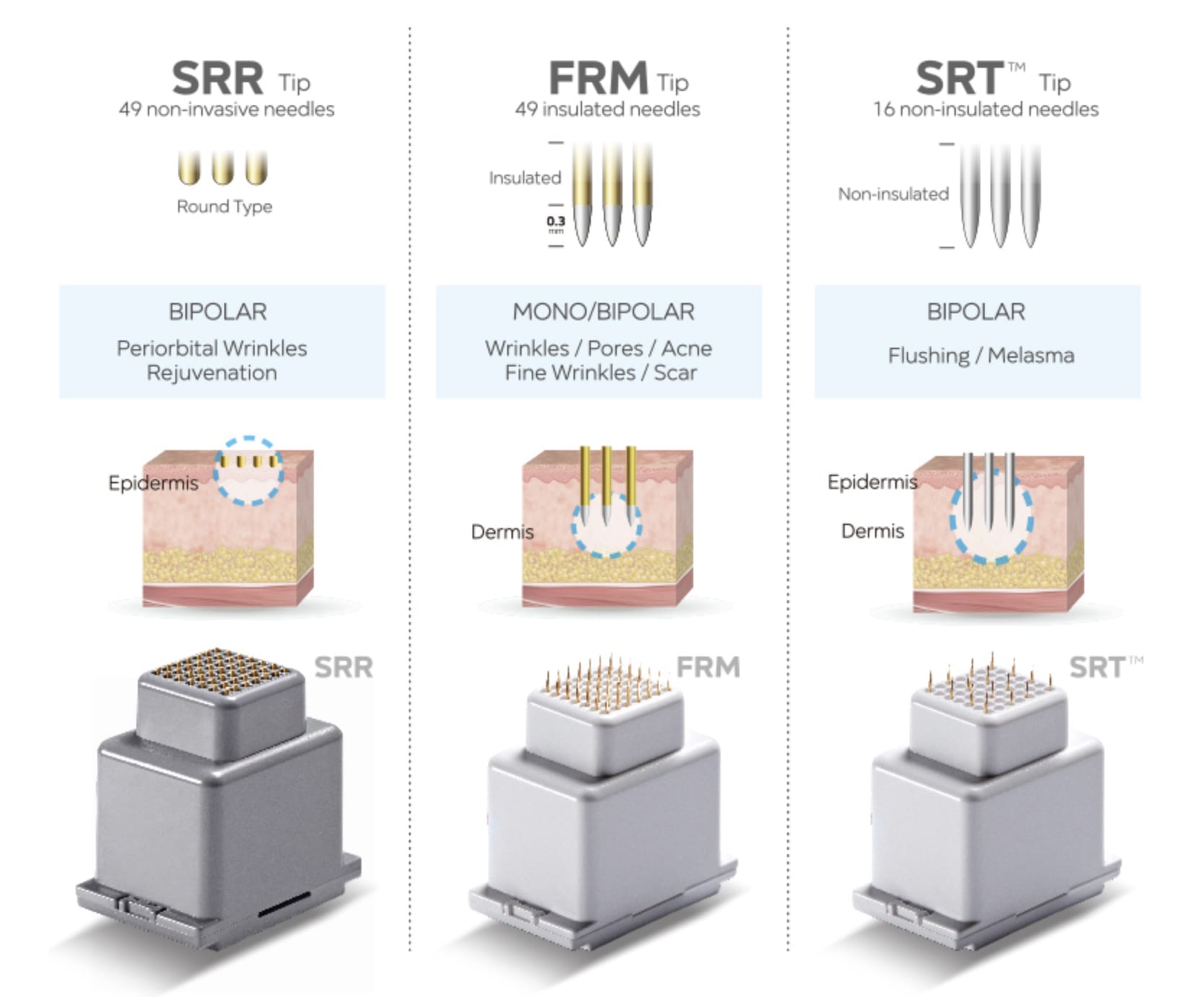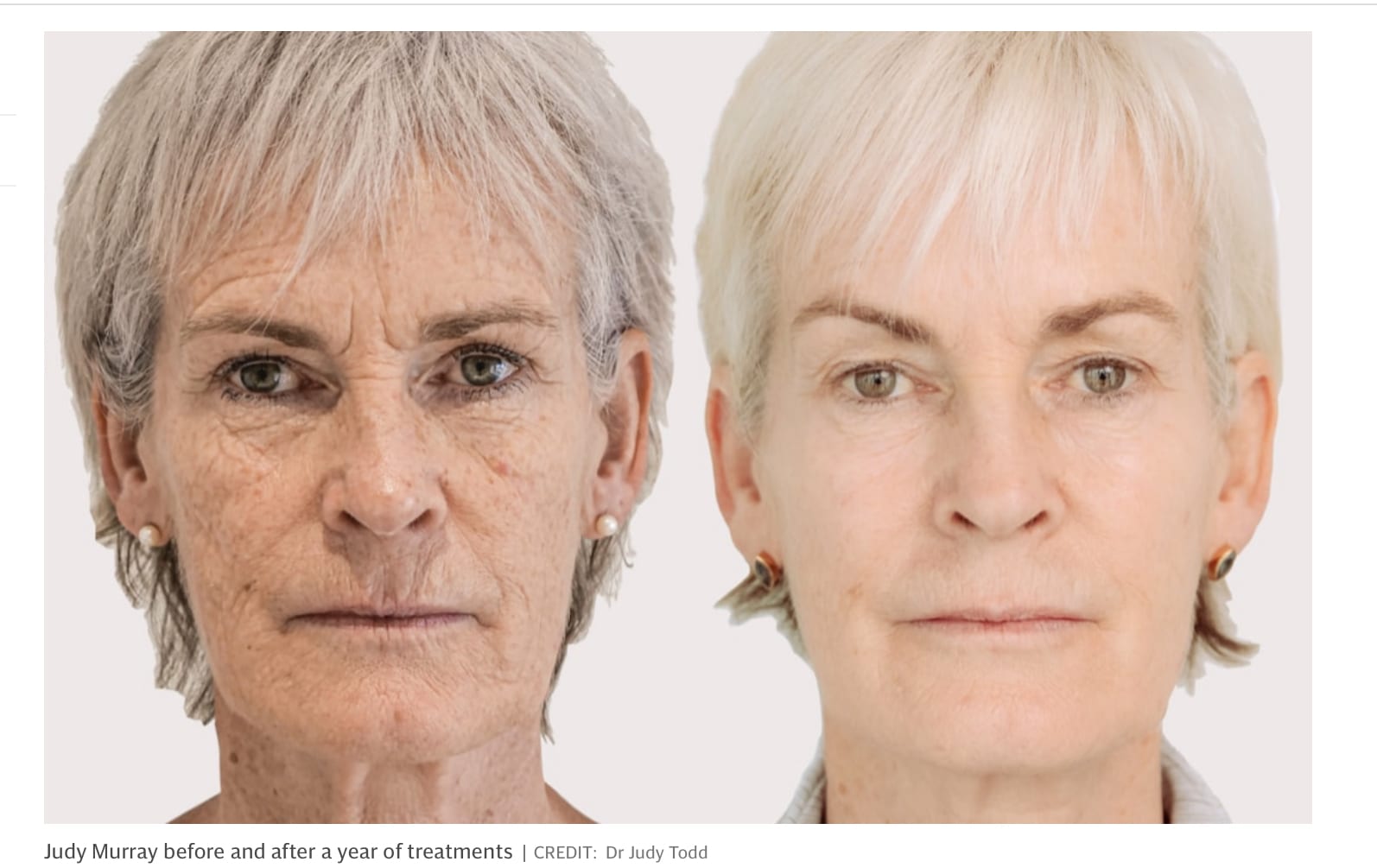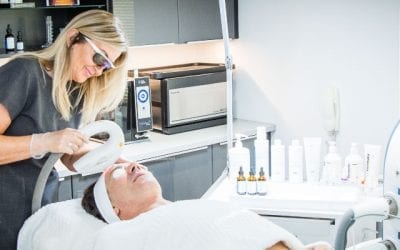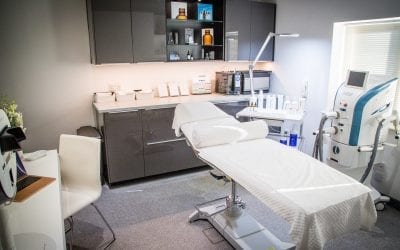Recently, the ‘Times’ wrote a column on how Judy Murray achieved such a smooth and glowing complexion without going under the knife. It turns out that Judy had undergone 3 treatments of Radio Frequency skin tightening with medical micro-needling. A treatment that I have been offering here at SkinGenius for a few years now with fantastic results on the neck and eye areas along with smoothing out wrinkles and softening scars anywhere on the face and body.
Looking at today’s market, I see a growth in the same technology but with varying energy levels and adjustments. So what today is the best machine? During the lockdown, I have found it a perfect time to research and develop my knowledge of the technology that is backed by scientific evidence. This has again convinced me that I am still offering the very best in the form of INTRAcel
What creates the skin tightening and smoothing of wrinkles?
Radio Frequency energy is delivered deep into the subdermal tissue via insulated needles, which help to minimise pigmentation stimulation. The heat creates new collagen stimulation and remodels the SMAS membrane (Sub-Muscular Aponeurotic System), which over a period of weeks and months continues to smooth and tighten
INTRAcel Radio Frequency Micro-Needling – Let us look at the facts:
- 49 micro-needles compared to 15 – 30 on later models – better results on surface irregularities and deep wrinkles
- Insulated needles compared to non-insulated which can result in Post-inflammatory hyperpigmentation
- Needle depth 0.5mm – 2mm – compared to 1 – 4mm depth
Deep does not mean better! Around the eyes and some thin, aged skins need to keep fats within the tissue to look youthful. Going too deep could result in dark pigmentation and thin skin so it is crucial to get the depth correct. - Although I agree with a 4mm needle on thicker tissue for ‘lockdown’ tummies but we are talking tightening faces here, and not remodelling fat.
- Speed adjustments to be in control when treating delicate areas such as eyes and lips compared to set speeds.

Radio Frequency Skin Tightening Facial
I also just use RF energy without the needles as I can still achieve a general tightness to the skin, however you would need this monthly and it would not address the wrinkling and moderate slackness. That is why I choose to add this stand-alone RF in my monthly facial, “The Ultra Facial”, along with mesotherapy and a mild peel.
What is the expected downtime with Radio Frequecny Mico-Needling?
We have all had time to reflect on how we want to look after our skin health in the future, especially having to go on to zoom meetings and noticing our jawlines not as firm, which is why this treatment is gaining in popularity as the results are natural and nothing extreme so you can go about your day to day without concerns. Yes, you are red and a little tight for a few days, but you can wear mineral makeup straight away if that concerns you.
We have all experienced anxiety and stress over the last 12 months so it’s obvious that our skin will show signs of ageing. Stress will change the proteins in our skin to reduce its elasticity, which can contribute to wrinkle formation, and anxiety will produce cortisol, which will break down collagen.
How to prepare your skin before your treatment.
A diet high in sugar will play havoc with our skins yet we have all needed that weekly cake bake to get us through each month. Let’s say no more about wine!! Yet now is the time to be feeling more positive and a great way to move out of lockdown would be to tackle these areas now so that when you start your treatment to boost your complexion, you know you are on your way to reversing the damage we may have developed during lockdown.
Five steps (I have more but who needs the pressure!) to prepare your skin for clinical treatments:
- Start the day with warm water and lemon.
- Download a yoga app and do as little as 10 -20mins each day to give your skin a glow and improve digestion. I love the Asana Rebel app.
- Wear your SPF daily. Harmful rays penetrate through glass so even if you are indoors just put it on. You can order through the SkinGenius website if you are running low.
- Drink soluble collagen for a month so you are treating and rebuilding collagen from within. I stopped my Skinade drink for a few months and noticed how my face and body looked dry and dull so I am back on again and will not be stopping that in a hurry!
- Drink lots of water, less wine, less coffee and a good 8/9 hours sleep is vital to repair and renew our skin.
BOOK A REMOTE CONSULTATION WITH JANINE TO DISCUSS YOUR TREATMENT PLAN
INTRAcel will be available on Wednesdays from
10 am – 8 pm.
Treatments range from £500 – £850
Wrinkles and slack tissue normally require 3 treatments over 4 months
Ultra Facial – £195
A monthly facial for clients wanting to maintain clinical results or looking to advance into aesthetic procedures. Includes Radio Frequency, mesotherapy and a corrective peel.







0 Comments